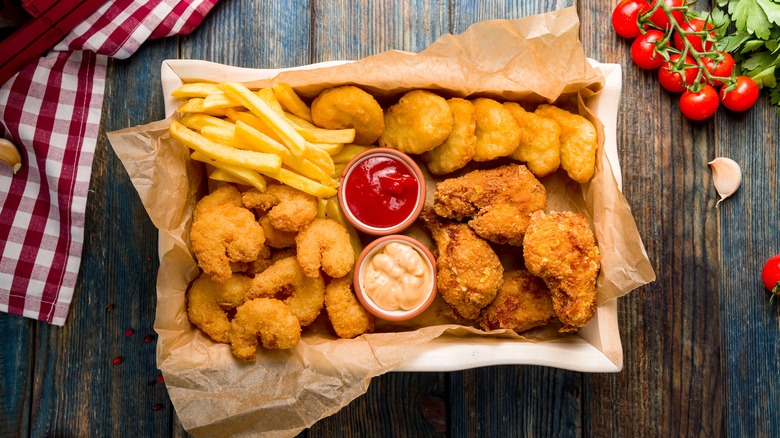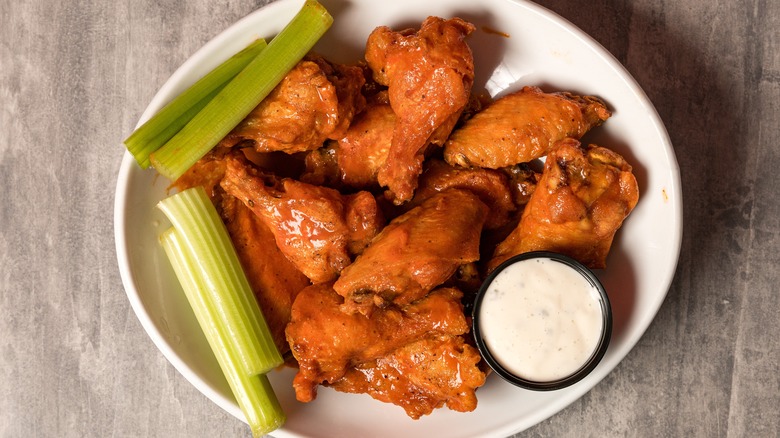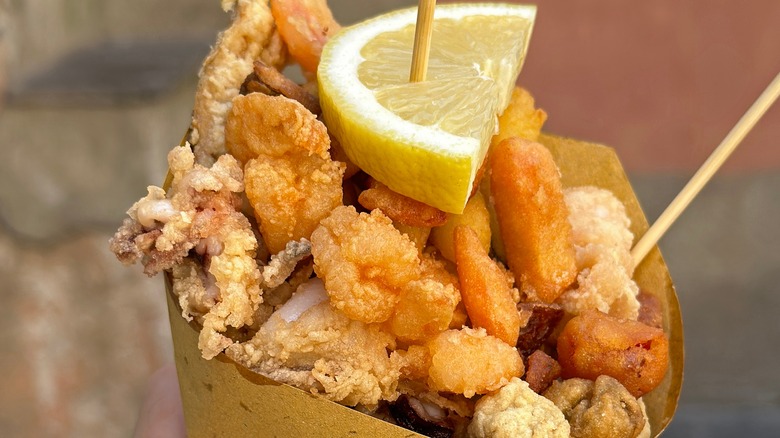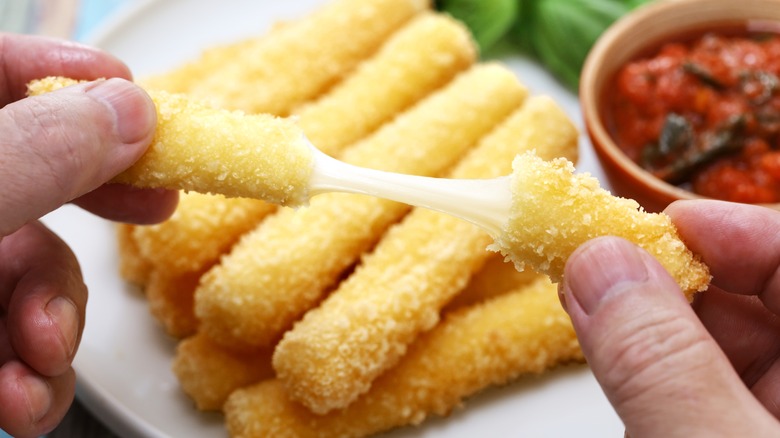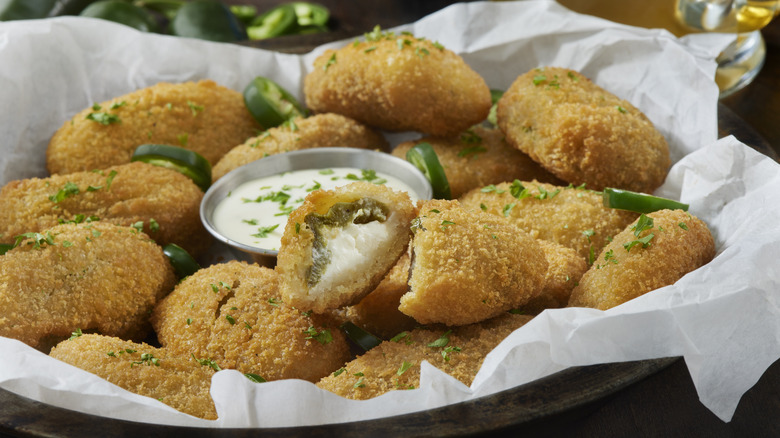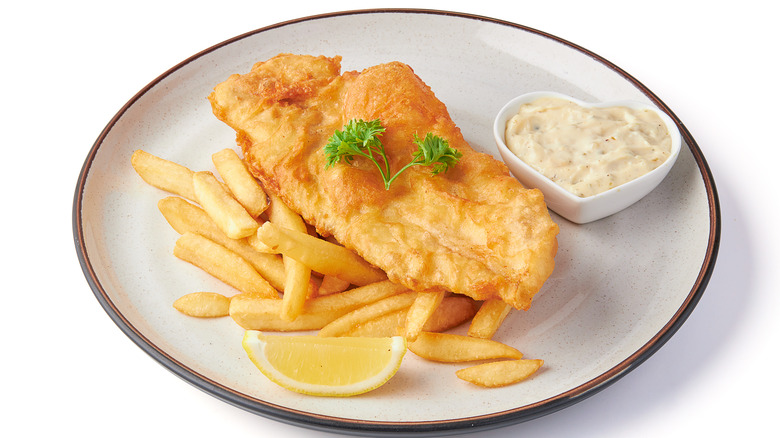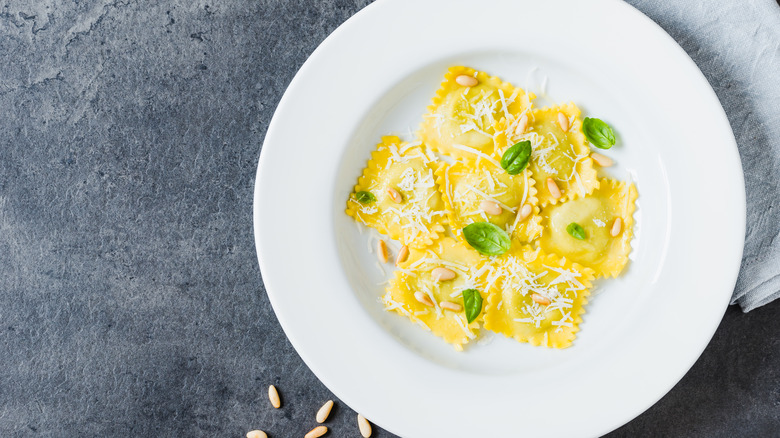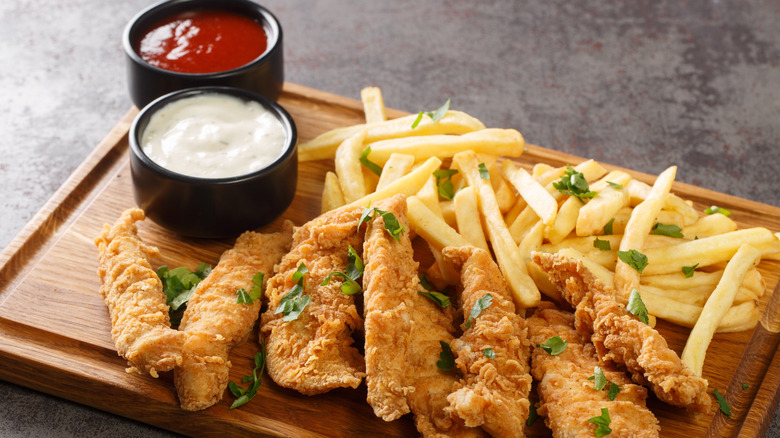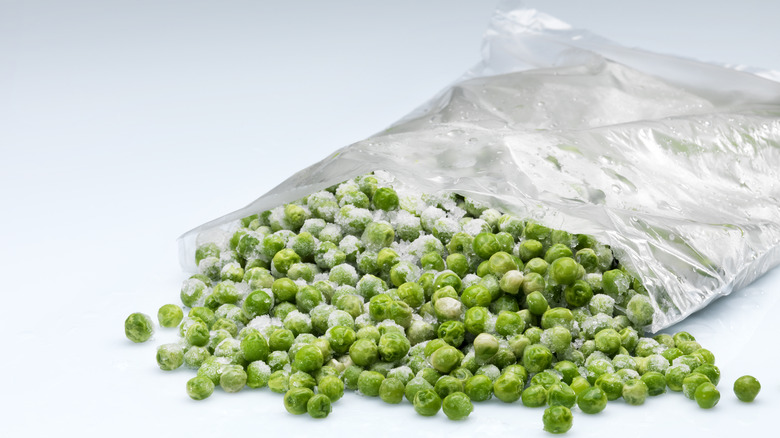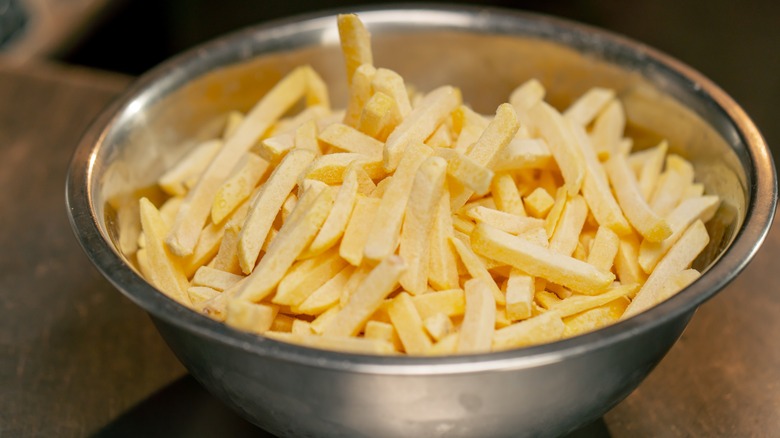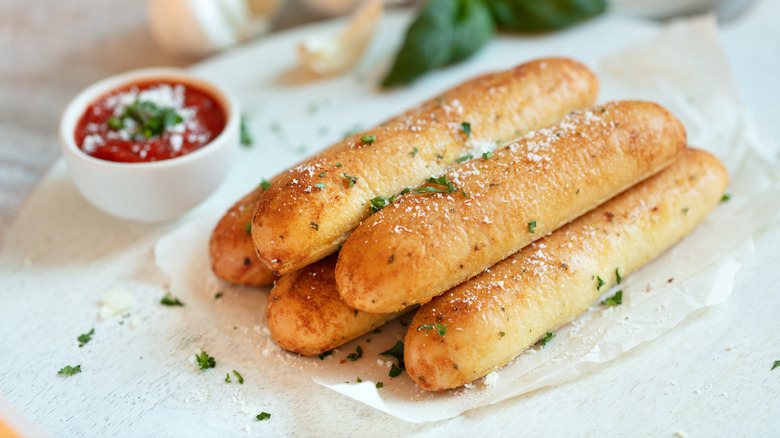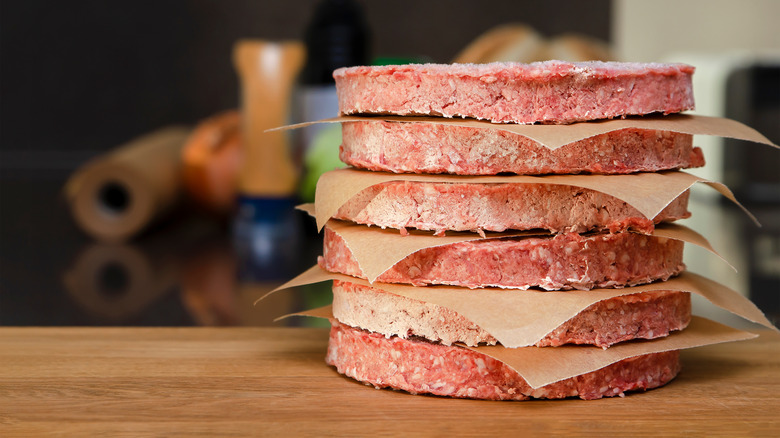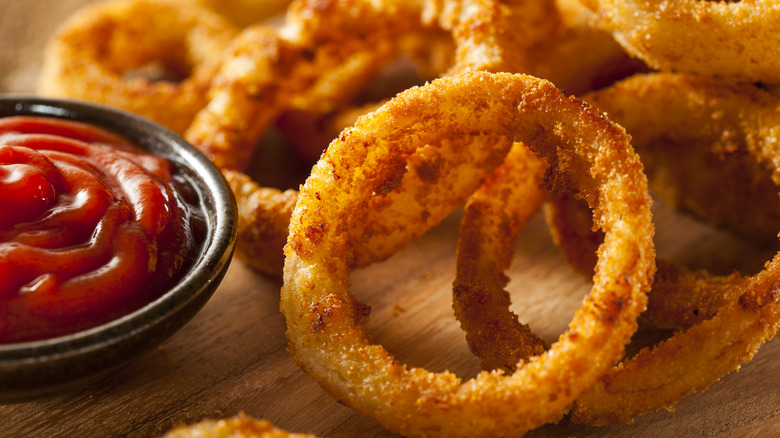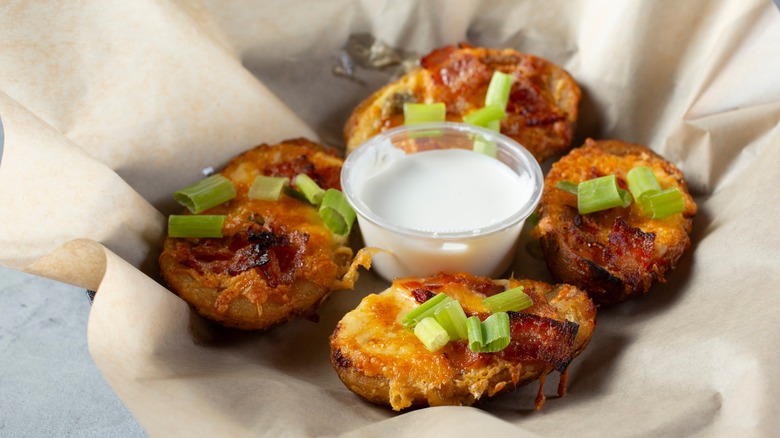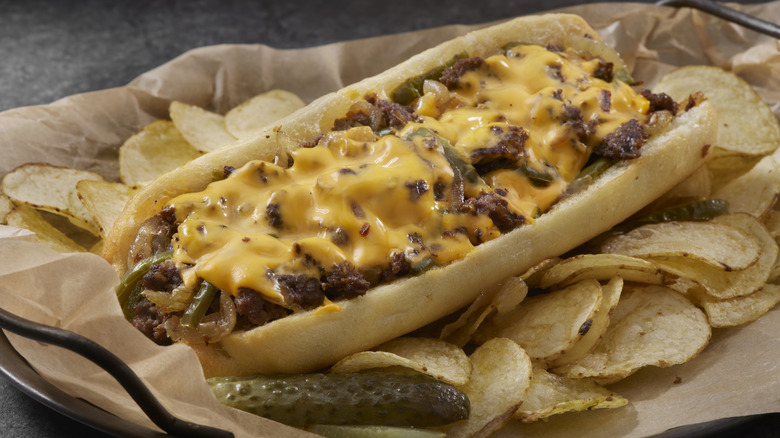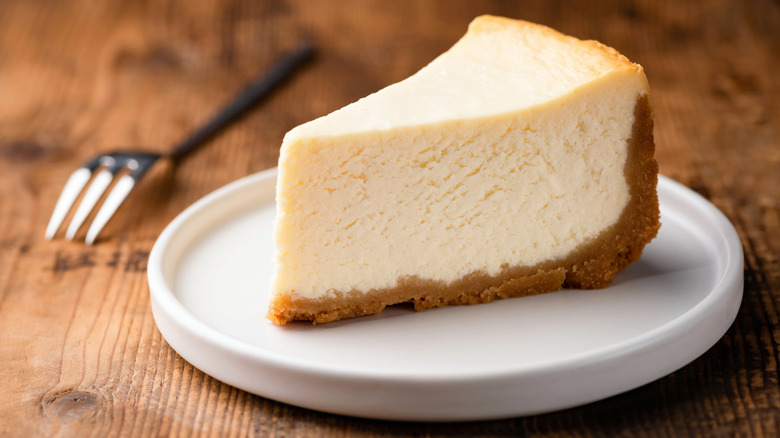Expert Reveals Popular Restaurant Menu Items That Are Often Made From Frozen Foods
If you frequently dine out and are familiar with the scene, you may not anticipate everything to be made-to-order when eating at a fast food spot or a run-of-the-mill chain restaurant. Obviously, the quality of food you get depends largely on the restaurant. Still, you may be surprised to learn that some of the most popular menu items at many restaurants are often made from frozen foods. Whether this is a deal-breaker for you or not, it'd probably be nice to know what you're actually ordering, right? Either way, I'll spill everything I know about what foods are likely made with frozen ingredients so you know what to expect.
I worked in the food service industry for 20 years (in many roles), so it's more than fair to say I know what is going on behind the scenes. I also considered numerous sources, including cook tell-alls, food blogs, and more to present you with well-rounded insights into industry standards. Keep in mind that not all restaurants pump out mass-produced frozen foods, so what I reveal doesn't apply to every establishment. However, the ones that don't serve frozen foods often broadcast their use of fresh ingredients with pride — and they also have higher prices.
Keep reading to learn what I discovered — while working in numerous restaurants — regarding the use of frozen ingredients so you can make an informed decision the next time you're evaluating your choices.
Chicken wings
Many of the restaurants I worked at served chicken wings, and all but one used frozen wings. Lots of people believe you shouldn't bother with frozen pre-made chicken wings, but thankfully, most restaurants make the sauces they dredge them in, so it's not quite the same thing as buying a bag of frozen buffalo wings from the store. Actually, I'm a firm believer that the yummy sauces are why people order restaurant chicken wings in astounding quantities. As it turns out, a good sauce goes a long way.
Restaurants often start with frozen wings because they keep for longer in the freezer than raw chicken does in the fridge. They also come with a hidden benefit that I was completely unaware of before stepping into an industrial kitchen: Frozen chicken wings can be tossed into the deep fryer without thawing them first. This handy trait minimizes food safety concerns, of which there are many regarding raw meat, and also saves line cooks lots of time. So, for a kitchen that serves hundreds of chicken wings a day, frozen wings and house-made sauces make a winning combination.
Calamari and shrimp
Calamari is a super popular appetizer at many restaurants. It's crunchy, chewy, flavorful, and people love it. Plus, cooking squid at home can be somewhat intimidating, so ordering it from a restaurant is often viewed as a much better option. Still, unless you're at a restaurant known for serving fresh seafood, calamari almost always starts frozen. Seafood is best when it's super fresh, so freezing it is the best, and often only way to extend its usability. Restaurants know this and use frozen options to lower costs and ensure their highly perishable food items don't turn into food waste if they aren't ordered within a couple of days.
Along these same lines, shrimp is typically frozen as well. If you are in a landlocked state, it's pretty much guaranteed. Of course, there are reputable seafood establishments everywhere that get fresh shipments daily, but compared to how many spots serve shrimp and calamari, they are few and far between. If you don't live on the East or West Coast, this may not be very surprising. However, even restaurants in Maine serve frozen lobster if it's not peak season, so it really depends on the place.
Mozzarella sticks
The fact that restaurant mozzarella sticks are very likely frozen probably isn't much of a surprise. After all, they pretty much look and taste the same as the ones you can buy pre-made in the freezer section of your grocery store. As I'm sure you can imagine, creating mozzarella sticks from scratch is labor-intensive, so it's usually only done in high-end or homestyle Italian restaurants. In bars, diners, and many chain or mid-range restaurants, you should expect to be served pre-made, frozen mozzarella sticks.
I don't mind frozen mozzarella sticks and I buy them for my house occasionally, but that doesn't mean they are anywhere near as good as homemade. I also order them from restaurants because they are much better deep-fried than baked or air-fried in my kitchen. They are not extraordinary, but they are a tasty share plate. However, some restaurants use extremely low-quality frozen mozzarella sticks, and even those can't be saved by the deep fryer and yummy dipping sauces.
Jalapeño poppers
Similar to mozzarella sticks, restaurants pretty much exclusively serve frozen jalapeño poppers. If you ever come across a place that doesn't they'll be sure to tell you on the menu and I recommend taking full advantage. However, at your average bar or restaurant, expect them to be frozen. I worked in several bars that offered jalapeño poppers and you better believe they were frozen. But that doesn't mean I didn't enjoy them.
Creating jalapeño poppers from scratch is quite demanding. Not only do you have to bread the poppers before deep-frying them, but you have to take the time to stuff the tiny jalapeños with cream cheese. Additionally, the breading must be handled properly or it won't stick and evenly coat the peppers as intended. Finally, it's difficult for restaurants to order large batches of jalapeños that are small enough and similar enough in size to turn them into evenly cooked jalapeño poppers. Considering how much people love them, restaurants still want them on the menu, so a frozen product is the obvious solution.
Breaded fish
Breaded, deep-fried foods are undeniably delicious, but it's challenging for many restaurants to make all (or any) of their deep-fried foods from scratch. Add seafood to the equation, and it gets even more complicated. With this in mind, it's easy to see why many restaurants order frozen breaded fish. It streamlines preparation, leading to efficient service and minimal labor. It also helps keep prices low, both for the restaurant and the guests. Actually, lots of restaurant seafood is frozen, not just the breaded fish.
Typically served as fish and chips, or something similar, even frozen breaded fish can be quite tasty when deep fried. However, a discerning palate will easily pick up on a lack of freshness. The call of the deep fryer may be strong, but you might want to order something else if you dislike frozen seafood. The exceptions to this rule are if you're in a seafood restaurant or somewhere you can be certain is serving fresh, breaded in-house fish, like Gordon Ramsay Fish & Chips in Las Vegas or a roadside shop in New England.
Stuffed pasta
If you are at a reputable Italian restaurant or a place known for serving scratch-made food, it's safe to assume any stuffed pasta on the menu is fresh and made in-house. If you're in a chain restaurant or pretty much anywhere else, frozen stuffed pasta is the norm. This includes anything from ravioli to tortellini to manicotti and more. As I'm sure you know, making pasta isn't the easiest task. It has a lot of components and the margin for error is minimal. Frozen stuffed pasta eliminates potential issues, significantly reduces labor costs, and keeps prices low.
An easy way to tell if a restaurant's stuffed pasta is made in-house or frozen is to evaluate the portion size. Handmade stuffed pastas generally come in surprisingly small portions. For example, you may only get three or four ravioli on a plate. The opposite is often true if a restaurant serves frozen stuffed pasta. So, if you get a hefty portion of pasta, there's a good chance it was frozen. Of course, you can always ask your server, too.
Breaded chicken
Surprisingly, both Chick-fil-A and KFC serve chicken that isn't frozen and is breaded in-house, but the same can't be said for many sit-down restaurants. Just like other breaded foods, it takes lots of time and effort to do it right, so it's an easy way for kitchens to cut corners. This is particularly true if the only breaded chicken dishes a restaurant serves are found on the kid's menu, like chicken nuggets, tenders, or fingers (yes, there is actually a difference).
Places known for their fried chicken or other breaded chicken dishes most likely take the time to present you with the real deal. However, chain restaurants, diners, and bars often opt for frozen products. In addition to the kid's menu, anything from chicken parmesan to chicken sandwiches to an appetizer of chicken strips could likely have arrived frozen and breaded so all the cooks have to do is deep-fry them. I've seen this in many kitchens, and while it isn't premium quality, there were rarely customer complaints.
Peas
Fresh peas are delicious, but unfortunately, they are highly perishable. In the fridge, peas only last for about five to seven days, making it difficult for restaurants to keep them around with an increased risk of food waste. However, in the freezer, they last much longer. When stored in heavy-duty freezer bags (as is common in restaurants) peas can last six to eight months, giving restaurants plenty of time to use them before they spoil. As a result, it just makes sense for many restaurants to choose frozen peas.
Due to the short shelf-life of peas, many chefs choose to leave them off of their menus entirely. Why bother with a product potentially spoiling when you can simply use another vegetable? Still, in restaurants where fresh produce isn't a main priority, frozen peas make a decent substitute.
They used canned peas in a couple of the restaurants I worked, so that's a possibility, too. Whether a restaurant uses canned or frozen peas is typically determined by cost, but it might also be a storage concern. If there isn't a lot of extra space in the freezer, canned peas could be the default option. Really, it just comes down to the restaurant and the chefs.
French fries
This one might hurt a bit, but it's true nonetheless. Many restaurants serve frozen french fries, and I'm not just talking about fast food joints, either. From sports bars to diners to chain restaurants, frozen french fries are on the menu. There's nothing really wrong with frozen fries, lots of people make them at home all of the time. Still, it's easy to assume restaurants make their own. However, it's not difficult to tell whether or not a fry is made from scratch, so if you aren't sure, it was most likely frozen.
A typical restaurant goes through a massive amount of fries daily, and keeping up with the demand is challenging if the kitchen makes them. In fact, I worked at an upscale, urban diner with a cook dedicated to cutting, prepping, and blanching potatoes pretty much nonstop to ensure we didn't run out. Adversely, I also worked for many places that served frozen fries. In addition to saving ample amounts of time, buying them pre-made allows restaurants to serve different kinds of fries without special tools like the ones needed to make tornado, crinkle-cut, or curly fries.
Breadsticks
At a premium-quality restaurant, fresh breadsticks aren't unheard of, but at national chains and low-end spots, frozen breadsticks and rolls are the norm. I mean, how else could they create consistency across so many restaurants? It's not just chain restaurants, either. Actually, frozen breadsticks are a win-win for a lot of establishments because they ensure each table gets a nearly identical presentation. They also save ridiculous amounts of time. I mean, making bread is no easy feat.
In addition to breadsticks and rolls, lots of restaurants freeze their sliced bread as well. Even if it arrives at the restaurant fresh, freezing it is a common practice (at least in my experience). Freezing bread ensures it doesn't go stale before it is used. While it's never quite the same as when it is freshly baked, it's often tricky to tell if bread has been frozen when it is toasted or grilled and slathered with sauce and topped with other ingredients.
Meat and plant-based burger patties
It's probably not much of a shock to learn that many fast food restaurants like McDonald's and Burger King serve burger patties that arrive pre-formed and frozen. However, the number of other restaurants that also follow this practice could be somewhat surprising. Don't get me wrong, lots of bars, restaurants, and diners make their burger patties in-house and are not frozen. Still, there are plenty of places that simply do not. If you're unsure about a specific restaurant, you'll have to use your best judgment or ask your server or bartender.
Plant-based burger patties also fall into this same frozen food category for many restaurants. In my experience, if a menu doesn't specifically say the veggie burger is made in-house or uses a brand name, like Gardenburger, Beyond, or Impossible, it's most likely frozen (just like some of the ones you get at the grocery store). For restaurants that don't sell a lot of veggie burgers, this is a huge help. It ensures there is a hearty, filling option for plant-based diets without having to worry about food waste.
Onion rings
Onion rings are another one of those foods that taste amazing when made from scratch but take a ton of work to prepare. If it's not done exactly right, the breading will likely slide off the onions, leaving you with a mess. In addition, making them from scratch results in a wide range of sizes, leading to uneven cooking and varying cook times. To minimize the room for error and save considerable amounts of time, many restaurants choose to serve frozen onion rings.
Honestly, even frozen onion rings can be tricky to manage in large quantities due to the fragile breading. I've seen many bowls full of deconstructed onion rings in restaurant kitchens. Nothing out of the ordinary happened while the line cooks were frying them, they just fell apart. It's as simple as that. Regardless, people love them, so don't expect them to suddenly vanish from restaurant menus everywhere. Just know that most places buy them pre-made and frozen and you're good. If you want to seek out homemade onion rings, a high-quality steak house is probably your best bet. Or, you could attempt to create homemade onion rings in your own kitchen.
Potato skins
Potato skins take a considerable amount of time to make, at least when created from scratch. Many of the ingredients can be prepped, like pre-cooking the small potatoes and scooping out chunks of the flesh, but even so, they have a lot of components. Consistency, something restaurants strive for, is also challenging with loaded skins because potatoes come in all different shapes and sizes. As a result, it's often simpler for restaurants to serve frozen potato skins.
I only worked in one restaurant that served potato skins, but they were definitely frozen with a fresh garnish of diced green onion. It was a sports bar across the street from a stadium, though, so lively sports fans didn't really seem to care. Guests did send them back occasionally because the skins were hard and the toppings were lackluster. Still, aside from adding a generous dollop of ranch or sour cream, nothing could be done to remedy the issue. After talking to a few of my industry friends, they also confirmed they worked at places that served frozen potato skins. If you can't modify a restaurant's potato skins — for example, ordering them without bacon — it's a good sign they are a frozen product.
Philly cheesesteak meat
Philly cheesesteak sandwiches can be found on restaurant menus across the United States, not just in Philadelphia (where they're legendary). For the most part, cheesesteaks are pretty popular, too. However, thinly shaving the ribeye that makes up the bulk of the sandwich is challenging at best. It takes lots of precision and special tools to achieve the perfect cuts, so many kitchens resort to frozen meat instead. It eliminates tricky prep work and defrosts rapidly, leading to better efficiency in the kitchen. Plus, thanks to the meat being frozen, food waste doesn't have to be a major concern.
Frozen cheesesteak meat was pretty common in my experience. I even worked at a Philadelphia-themed sports bar that prided itself on shipping their bread in from Philly, but they still opted for frozen cheesesteak meat. People still raved about authenticity (maybe it was the Whiz) and came in hoards to order the sandwiches, so maybe the meat being frozen isn't a big deal. The choice is yours.
Cheesecake
I worked in several establishments over the years that offered cheesecake on the dessert menu and more often than not ... it was frozen. Typically, the cooks topped the cheesecake with fresh berries, sauces, and whipped cream, which almost made it seem like it could be fresh, but sadly, that wasn't always the case. Making baked goods and desserts from scratch simply isn't feasible for many busy restaurant kitchens because it's labor-intensive. In particular, cheesecakes can be quite fickle, further complicating things. Sure, a couple of places I worked actually made cheesecake from scratch, but even then, the cheesecake would likely go in the freezer if it didn't sell quickly enough.
In many restaurants, other desserts are also frozen, like chocolate lava cake, pies, and tarts. Again, they may use fresh garnishes, but that doesn't mean the main component wasn't frozen to begin with. If you're unsure about a specific restaurant's dessert offerings, ask your server. If they aren't sure, they can always check with the kitchen.

